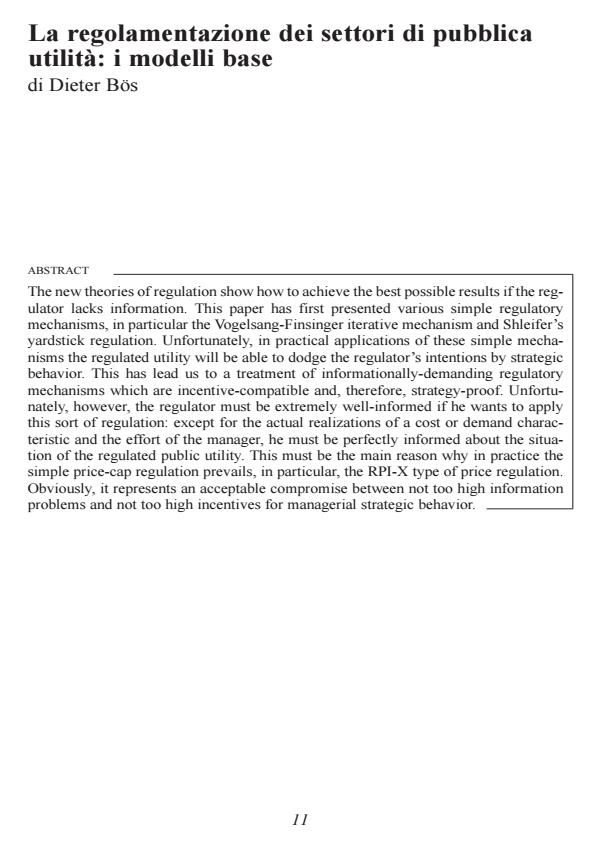La regolamentazione dei settori di pubblica utilità: i modelli base
Journal title ECONOMIA PUBBLICA
Author/s Dieter Bos
Publishing Year 2004 Issue 2004/2
Language Italian Pages 13 P. File size 134 KB
DOI
DOI is like a bar code for intellectual property: to have more infomation
click here
Below, you can see the article first page
If you want to buy this article in PDF format, you can do it, following the instructions to buy download credits

FrancoAngeli is member of Publishers International Linking Association, Inc (PILA), a not-for-profit association which run the CrossRef service enabling links to and from online scholarly content.
The new theories of regulation show how to achieve the best possible results if the regulatorlacks information. This paper has first presented various simple regulatory mechanisms, in particular the Vogelsang-Finsinger iterative mechanism and Shleifer’s yardstick regulation. Unfortunately, in practical applications of these simple mechanisms the regulated utility will be able to dodge the regulator’s intentions by strategic behavior. This has lead us to a treatment of informationally-demanding regulatory mechanisms which are incentive-compatible and, therefore, strategy-proof. Unfortunately, however, the regulator must be extremely well-informed if he wants to apply this sort of regulation: except for the actual realizations of a cost or demand characteristic and the effort of the manager, he must be perfectly informed about the situation of the regulated public utility. This must be the main reason why in practice the simple price-cap regulation prevails, in particular, the RPI-X type of price regulation. Obviously, it represents an acceptable compromise between not too high information problems and not too high incentives for managerial strategic behavior.
Dieter Bos, La regolamentazione dei settori di pubblica utilità: i modelli base in "ECONOMIA PUBBLICA " 2/2004, pp , DOI: